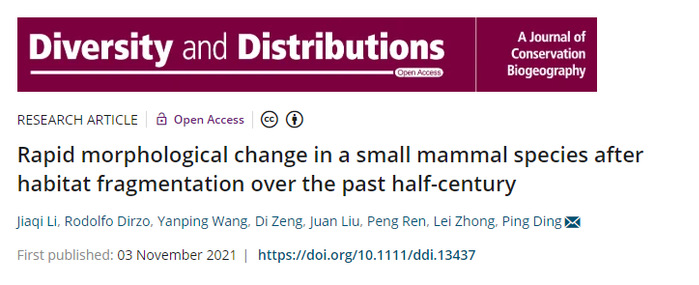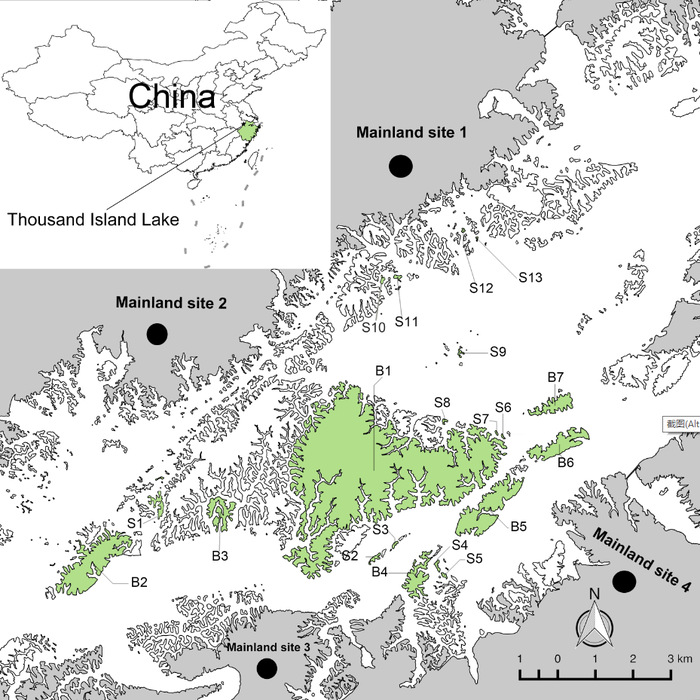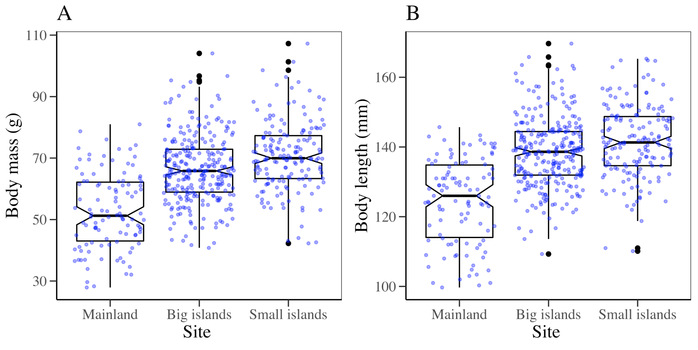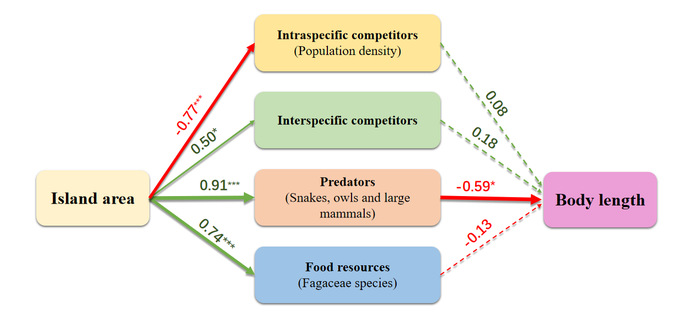Title: Rapid morphological change in a small mammal species after habitat fragmentation over the past half-century
Jiaqi Li, Rodolfo Dirzo, Yanping Wang, Di Zeng, Juan Liu, Peng Ren, Lei Zhong, Ping Ding
First published: 03 November 2021
https://doi.org/10.1111/ddi.13437

Abstract
Aim
To compare the rapid shifts in body size of mainland and island populations of a native rodent and examine the mechanisms underlying these changes.
Location
Thousand Island Lake, China, which was created in 1959 when the Xin'anjiang Dam was constructed for generating hydroelectricity.
Taxon
The Chinese white-bellied rat, Niviventer confucianus.
Methods
Field surveys were conducted from 2015 to 2018 to collect data on body size of the rodents from a set of islands and nearby mainland sites. We constructed multiple linear models to examine the relationships between body size (length and mass) of rodents and biological variables (predators, competitors and food availability). We also conducted structural equation modelling (SEM) by constructing models via confirmatory path analysis.
Results
All island populations of N. confucianus had significantly larger body size (both body mass and body length) than their mainland counterparts. Moreover, populations on small and more isolated islands had larger body size than their relatives on big islands. The relative absence of predators (large-bodied mammals, snakes and raptors) on islands was most strongly associated with shifts in the body size of rodents. The documented changes occurred after only a half-century of fragmentation.
Main conclusions
The observed rapid body enlargement of rodents after habitat fragmentation is consistent with a release from predation pressure. SEM indicated that island area, rather than island isolation, had positive effects on the abundance of predators, interspecific competitors and food resources, which then had an indirect impact on body size of the rodents. In this study, we report a remarkably rapid case of mammal morphological shifts in a small mammal in response to habitat fragmentation. Given the omnipresence of dams and other anthropogenic disturbances, our findings suggest that a wave of rapid phenotypic shifts in terrestrial vertebrates is taking place in the Anthropocene.
Link: https://onlinelibrary.wiley.com/doi/10.1111/ddi.13437








